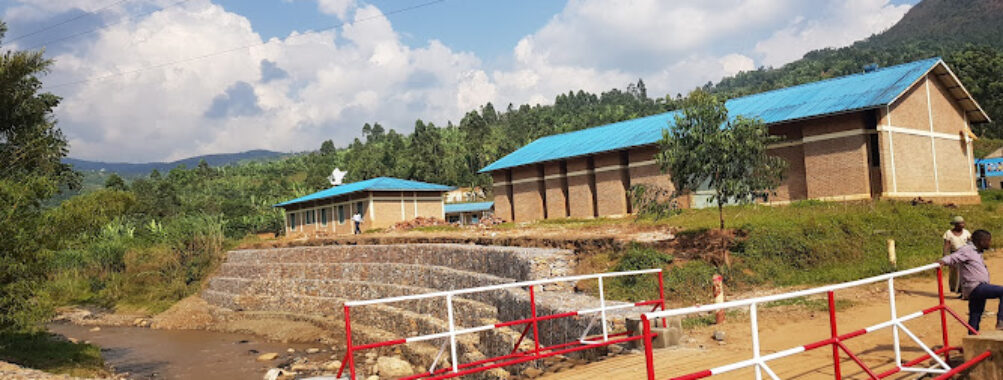
Kagwema
“`html
Table of Contents
Description
Kagwema Park in Bujumbura, Burundi, is one of those places that quietly surprises you. It’s not the kind of attraction that screams for attention, but the kind that grows on you the longer you stay. The park blends a curious mix of local industry, community spirit, and natural beauty. You’ll find areas dedicated to ceramic products, small-scale livestock farming, and even touches of civil engineering projects that give the place a unique, almost experimental character. It’s like a living showcase of Burundi’s craftsmanship and ingenuity.
When you walk through Kagwema, you’ll notice how the park feels both practical and peaceful. There’s something oddly charming about watching artisans shape clay into delicate ceramics while goats graze nearby. It’s not your typical park setup, but that’s exactly what makes it interesting. It’s a space where work and leisure coexist, and somehow it just works. The locals seem proud of it, too—you can feel it in the way they talk about the park, how they bring their kids here to play and learn a little about traditional crafts.
Honestly, I didn’t expect much the first time I went, but it turned out to be one of those places that stays with you. It’s earthy, authentic, and full of small details that speak to the rhythm of everyday life in Burundi. If you’re looking for an attraction that feels real—not polished or overly touristy—Kagwema Park is a refreshing find.
Key Features
- Local Ceramic Production: Watch artisans create traditional Burundian ceramics using age-old techniques passed down through generations.
- Livestock Areas: Small-scale animal farming gives visitors a glimpse into rural life and local agricultural practices.
- Civil Engineering Displays: Parts of the park showcase local construction and engineering projects, offering insight into Burundi’s developing infrastructure.
- Family-Friendly Spaces: Open areas where children can safely play while parents explore or relax.
- Community Interaction: Visitors can chat with locals, learn about their crafts, and even try their hand at pottery-making.
- Peaceful Ambience: Despite its industrial elements, the park maintains a calm, grounded atmosphere that’s perfect for reflection or a slow afternoon walk.
Best Time to Visit
The best time to visit Kagwema Park is during the dry season, roughly from June to September, when the weather is warm but not overwhelming. The paths stay dry, making it easier to explore the different sections of the park without worrying about mud or sudden downpours. During this period, the artisans are usually more active, and you’ll see more community events taking place.
If you’re into photography, the light in the late afternoon is pure magic—the kind that makes everything look golden and alive. I once spent an entire hour just watching the sunset reflect off the ceramic pieces lined up to dry. It’s moments like that which make this place feel quietly special.
How to Get There
Getting to Kagwema Park from central Bujumbura is fairly straightforward. The park is within a short drive from the city center, and you can easily catch a local taxi or a moto-taxi if you’re feeling adventurous. Most drivers know the area well, so even if you don’t speak much Kirundi or French, a quick mention of “Kagwema” usually gets you there without a hitch.
For those who like to explore at their own pace, renting a car can be a good option. The roads are generally in decent shape, though a few patches might be a bit bumpy. And if you’re the kind of traveler who enjoys blending in with locals, hop on a shared minibus—it’s cheap, fun, and gives you a taste of the everyday rhythm of Bujumbura life.
Tips for Visiting
Before you go, here are a few things worth keeping in mind. First, bring some local currency in small bills. Many of the artisans sell their handmade ceramics directly, and you’ll want to take a piece or two home—it’s a great way to support the community. Also, wear comfortable shoes. The park’s paths can be uneven in places, especially near the livestock areas or the construction displays.
If you’re traveling with kids, you’ll be happy to know that Kagwema is quite family-friendly. There’s plenty of open space for children to run around, and locals are generally welcoming to families. Just keep an eye on little ones near the animals or pottery workshops.
Photography is allowed, but it’s always polite to ask before snapping pictures of people or their work. Most will say yes, and some might even pose proudly with their creations. And don’t rush your visit—this isn’t the kind of attraction you breeze through in fifteen minutes. Take your time. Chat with the artisans. Watch how the clay takes shape. Smell the earth, the smoke from the kilns, the faint scent of livestock feed—it’s all part of the experience.
And here’s a small personal tip: bring a notebook. I found myself jotting down thoughts, sketches, and even snippets of conversation while sitting under a tree near the ceramics section. There’s something about Kagwema that sparks creativity. Maybe it’s the mix of art and labor, or maybe it’s just the honest simplicity of the place.
In short, Kagwema Park is more than just a park—it’s a living, breathing slice of Burundian life. It’s where tradition meets everyday practicality, where work and play intertwine. Whether you’re a curious traveler, a culture enthusiast, or just someone looking for a quiet afternoon away from the bustle of Bujumbura, this place has its own quiet charm that’s hard to forget.
“`
Location
Places to Stay Near Kagwema
Find and Book a Tour
Explore More Travel Guides
No reviews found! Be the first to review!